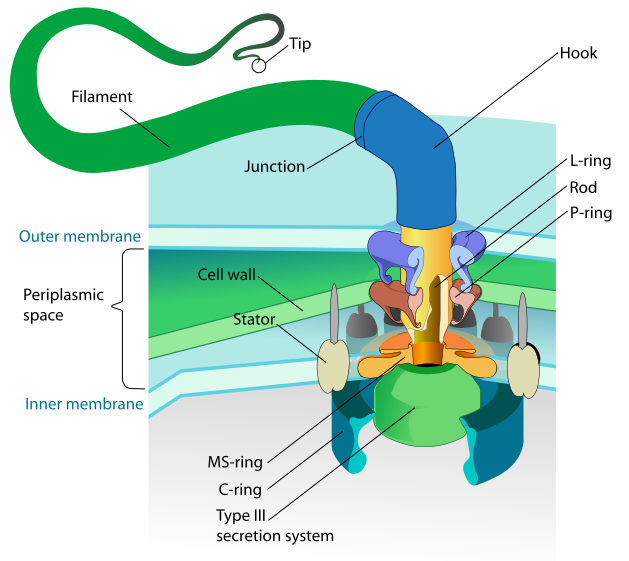THE MOTOR (LOCOMOTIVE FORCE BY MIDICHLORIAN)
FORCE AS A PHYSICAL CONCEPT
 It is the subject of jokes of how a midichlorian type of bacteria can connect to 'the force'. It is the subject of jokes of how a midichlorian type of bacteria can connect to 'the force'.
The 'Force' is seen as something fictional.
This is not so.
The midichlorian came from water, because it has flagellates.
It is by selectively making ATP available to the flagellate motor
that the motive power (force) is controlled by mitochondria.
Flagella differ greatly in composition, structure,and mechanism of propulsion.
However, all can be used for swimming.
There is a process in play at the heart of all life as we know it.
It is the power being generated by mitochondria.

The mitochondria, descended from Midichloria,
has to this day it's own DNA.
It is a theory that the first sign of extraterrestrial life found
in space may be a type of midichlorian bacteria.
These bacteria may have arrived on earth via panspermia.
It is a symbiosis of mutual benefit to all.
THE FORCE AS A PHYSICAL CONCEPT
The force manifests itself as locomotion.
The mitochondrial ATP provides power for this to its symbiont organism.
The symbiont organism (for instance a human) uses this energy in its fight for survival.
Be it for finding a mate, gathering food, do work, or to explore its environment.
The power of ATP is thereby changed from the simple beating of a flagellum,
to the motive power of the entire host body.
Explorers in the human domain have used this to discover the limits of the known world and universe.
Whether it was to journey to the furthest island, as the early seafarers did, or by examining inner space, to find relevant answers that lie at the heart of our existence.
All these endeavours require motive power.
And this motive extends from physical locomotion (the translation of a body from point a to b) to discovering the innermost secrets.
All these endeavours require energy that mitochondria are the source of.
This lies at the heart of our drive forward as a species.
In both evolution and knowledge.
“Candidatus Midichloria mitochondrii,” (for short: midichloria) is the intracellular symbiont of the sheep tick Ixodes ricinus,
Midichloria is the only described organism able to invade the mitochondria of ANY multicellular organism.
Midichloria has been detected in 100% of Ixodes female ticks across its geographical distribution and in 44% of males.
The basis of the symbiosis is not well understood.
Ixodes ticks raised in the laboratory apparently lose the symbiont but continue to survive and reproduce.
Results suggest that two cell lines, IRE/CTVM19 and BDE/CTVM14, may contain bacteria closely related to Midichloria and identical with it in a large part of the gene sequence.
This constitutes the first report of the presence of DNA similar to the DNA of Midichloria in animal (tick) cell lines.
Ticks are the second largest disease vector after mosquitos.
Lyme disease is one disease transmitted by ticks.
There is no study into transmission of midichlorian bacteria or its DNA fragments into other animal species, such as sheep or humans.
In conclusion, the Midichlorian bacteria invades the ovarian cell of a tick, and traces of genetically similar DNA are found throughout the ticks body as well, for instance:
Cell line name: BDE/CTVM14
Comments Group: Tick cell line.
Sex of cell: Sex undetermined
Category: Spontaneously immortalized cell line
The main advantage of immortal cell lines is its immortality;
the cells can be grown indefinitely in culture.
The mitochondria that power living cells share this characteristic since the first emergence of life on Earth.
Because they were one of the first bacteria.
And they still exist in a form that has remained largely unchanged over 100's and 100's of millions of years.
References:
http://aem.asm.org/content/74/19/6138.full
https://www.ncbi.nlm.nih.gov/nuccore/NC_015722
Detection of bacteria related to Candidatus Midichloria mitochondrii in tick cell lines: https://www.ncbi.nlm.nih.gov/pubmed/21748354
http://web.expasy.org/cellosaurus/CVCL_Z143 |